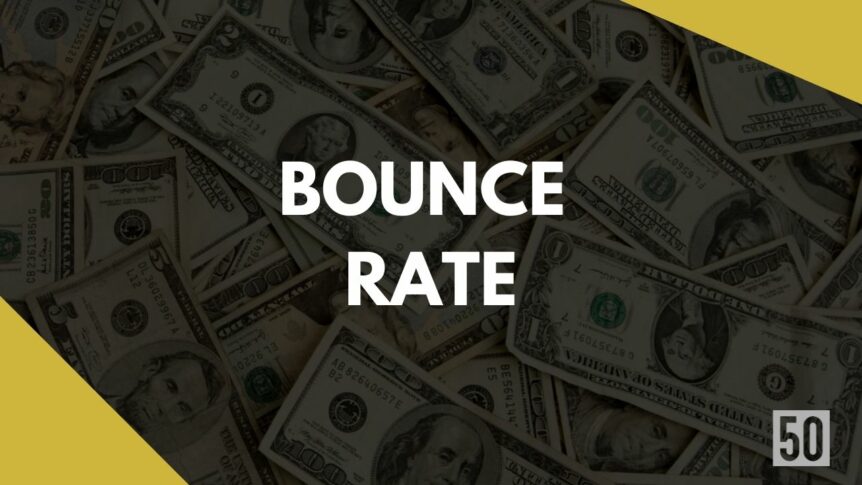Bounce rate is one of the most important metrics you need to track as a marketer or business owner. A high bounce rate means that people leave your website after visiting just one page, which isn’t good news. In this blog post, we’ll discuss what a good bounce rate is and how to improve it. We’ll also provide tips for optimizing your website to keep people around longer. So, if you want to learn more about bounce rates, read on!
What Is A Bounce Rate?
Bounce Rate is the visitor’s percentage that leaves the webpage without taking action like filing out forms, making a purchase, or clicking on links.
The bouncing visitor typically arrives at the site from a search engine results page (SERP) and then clicks on a link to the site. Once they arrive, if they don’t find what they are looking for, they will “bounce” back to the SERP. A high bounce rate is generally indicative of poor user experience. If visitors are landing on your site and quickly leaving, likely, they didn’t find what they were looking for.
This could be due to various factors, such as outdated content, confusing navigation, or a lack of relevant information. Improving your bounce rate requires taking a close look at your website and ensuring that it provides value to your visitors. Ensuring that your site is informative and easy to use can keep visitors engaged and reduce your bounce rate.
Why Is Bounce Rate Important?
There are a number of reasons why someone might bounce from your site, but the most common reason is that they needed help finding what they were looking for. If you have a high bounce rate, it’s important to look closely at your site design and content to see if there are any improvements you can make. By reducing your bounce rate, you’ll not only improve the quality of your website, but you’ll also be more likely to achieve your desired results.
Having a benchmark like bounce rate is so valuable in understanding where you stand against competitors. Here are the key statistics explaining bounce rates:
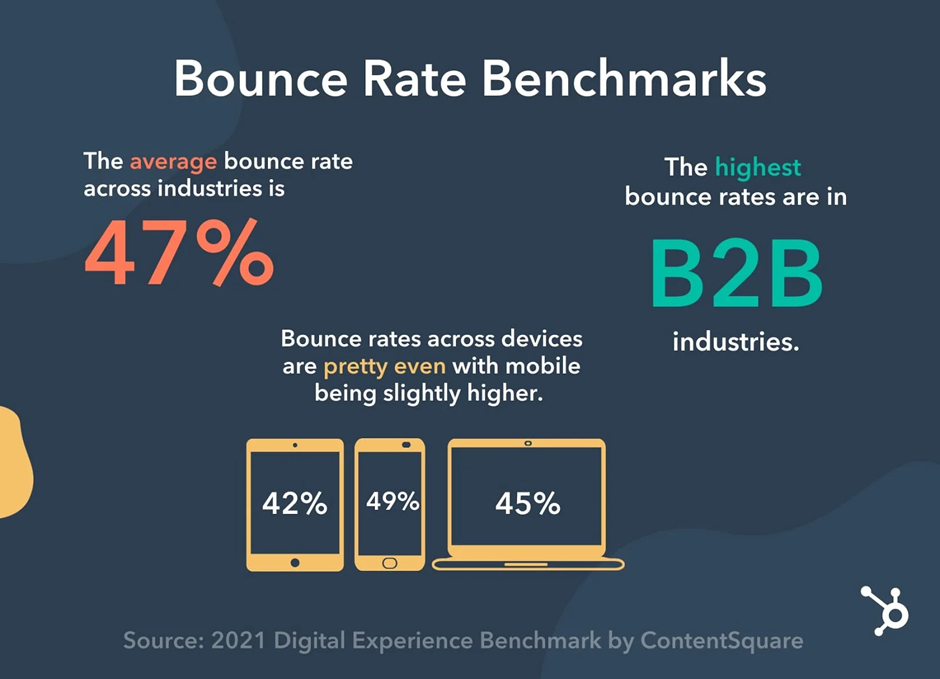
How To Calculate Bounce Rate?
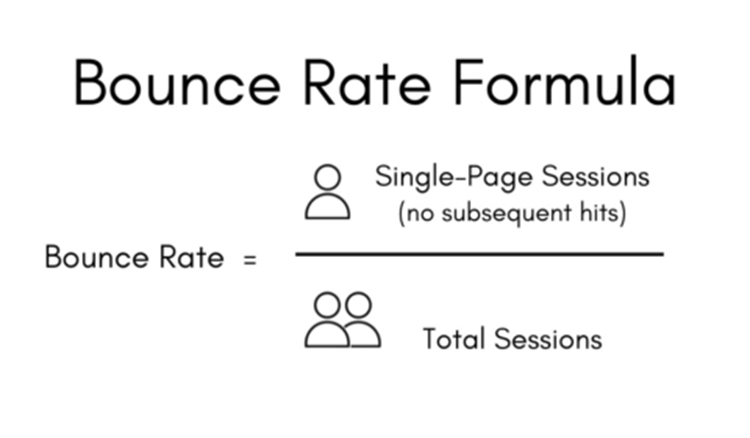
Given all the data that goes into running a website, it can take a lot of work to keep track of everything and make sense of everything. One important metric that you should pay attention to is your bounce rate. But what exactly is the bounce rate? And how do you calculate it?
Bounce rate is simply the percentage of people who leave your site after only viewing one page. So, if 100 people visit your site and 50 of them leave after only viewing the home page, your bounce rate would be 50%. To calculate it, just divide the number of people who leave your site after one page by the total number of people who visit it.
It’s essential to keep an eye on your bounce rate because it can indicate how engaging your content is. If people leave your site immediately after arriving, it’s likely because they need to find what they were looking for or find your content engaging. On the other hand, a low bounce rate could mean that people are finding what they’re looking for on your site and sticking around to explore more.
Is Bounce Rate A Ranking Signal?
Contention exists amongst search engine optimization professionals about whether or not bounce rates affect rankings. Some say that they do, while others assure you this isn’t true; we’ll explore both perspectives in depth below!
The debate over whether or not bounce rates affect rankings has been going on for some time now. Barry Schwartz, an SEO expert and the author of “The Relationshipmustache,” says that this isn’t true because SEMRush research shows no correlation between these two variables.
Search Engine Watch explains how there are several studies that seem to indicate as though Google’s algorithms respond differently based on different user behaviors, such as clicking away from website pages immediately after arriving there.
The bounce rate is a measurement of how many visitors leave the site without visiting again. Low bounce rates are often indicators for high-bacteria pages because people will only stick around if they find what you offer exciting or valuable enough. This metric can also serve as an early warning system when things start going off track! However, it’s crucial not just to focus on page speed (which we do here) but to ensure everything else – including content quality–remains top-notch.
You might have heard that bounce rates can tell you if someone was frustrated with your site or not pleased enough to return. However, this metric only gives us a little insight into how visitors felt while browsing through our pages – only whether they went on additional searches after landing here at first! Instead, consider metrics like dwell time and page views as alternatives for understanding what people think about when visiting any given webpages in order better understand their preferences from visit-to
What Is A Good Bounce Rate?
It’s important to keep an eye on your bounce rate. If it hovers around the 26-40 percent range, this is considered excellent, and you may want to consider why there would be such a large variation from average levels.
Anything over 41 – 55% shows as being higher than what should happen for websites in different industries or types of content because these numbers indicate how many users leave without doing any further damage interactively with pages they visit during their session (such as blogs).
According to research, the agency Brafton illustrates that a good average bounce rate is 58.18%.
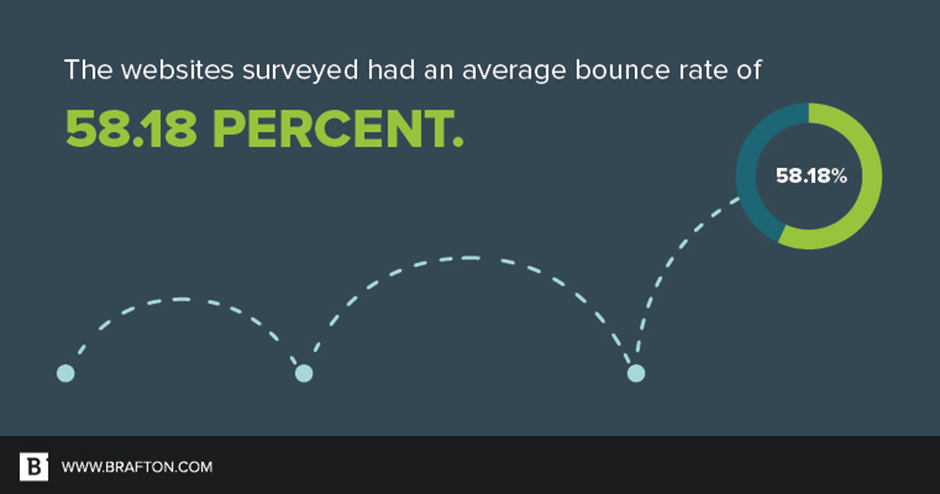
The agency also broke down the bounce rate among industries:
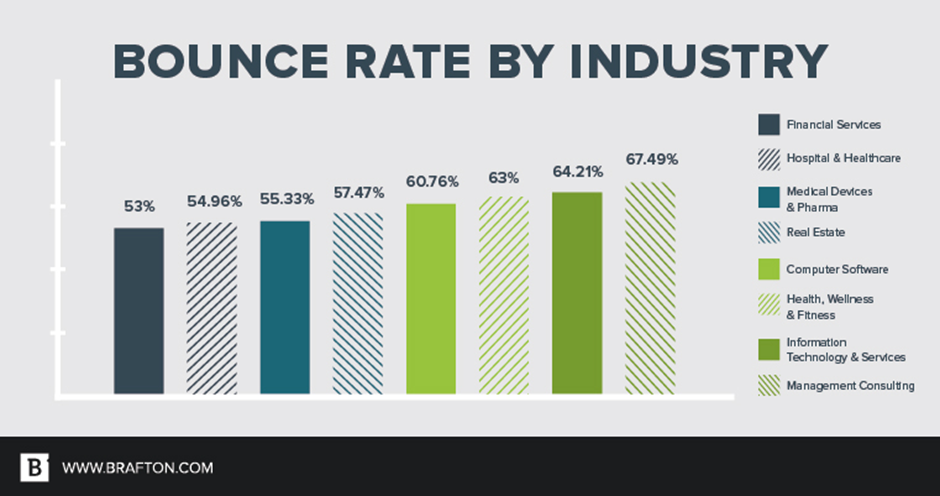
Moreover, the bounce rate was broken down by website type.
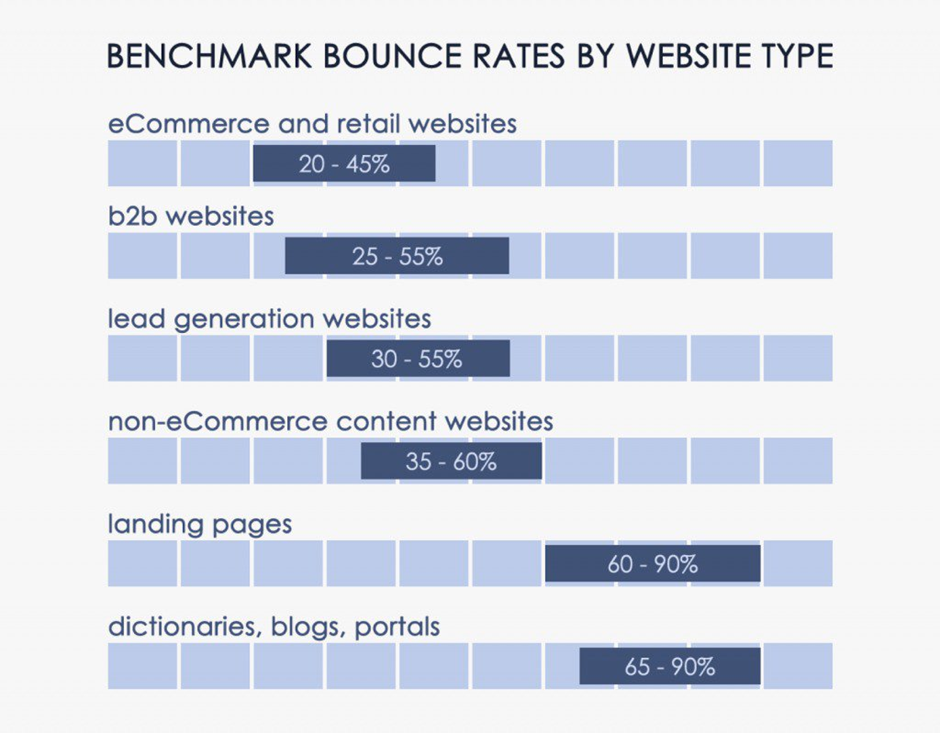
Here’s how the bounce rate varies by device:
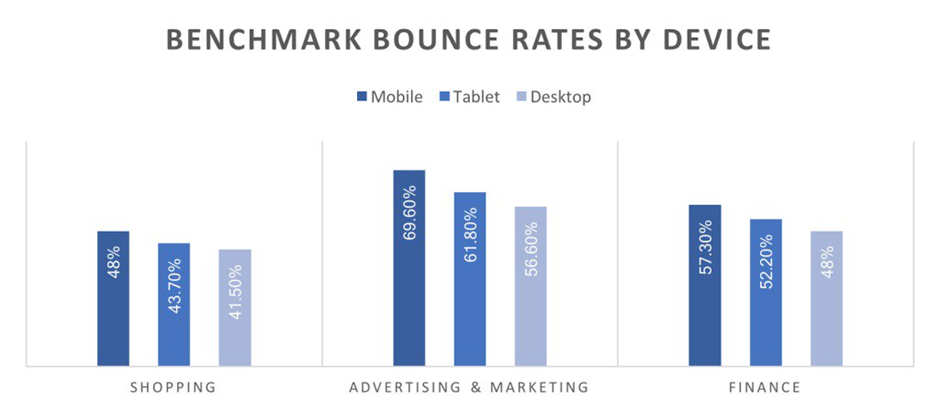
Tool To Calculate Bounce Rate
The best tool to calculate bounce rate is Google Analytics. It is quite simple.
Once you get to Behavior > Site Content, scroll down and look for the comparison feature. From there, select Bounce Rate in order to find out how your site compares with others on their bounce rates per page view!
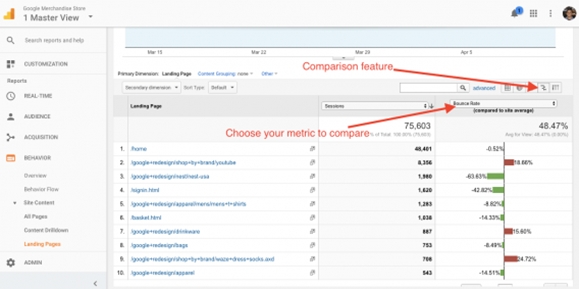
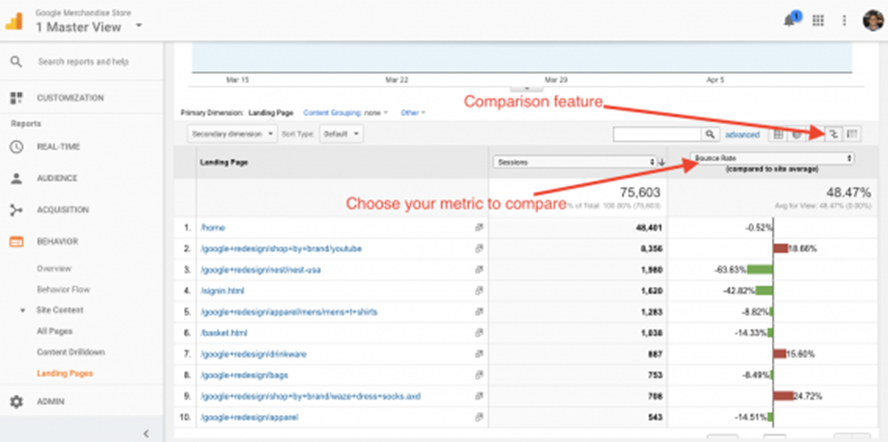
With this tool, you can get a better idea of what’s happening with your pages by narrowing down the criteria. For instance, if I wanted to know my bounce rates for only product category pages in general (not individual products), then i would select “Product Categories” as my filter option and see all such results appear before me on one page!
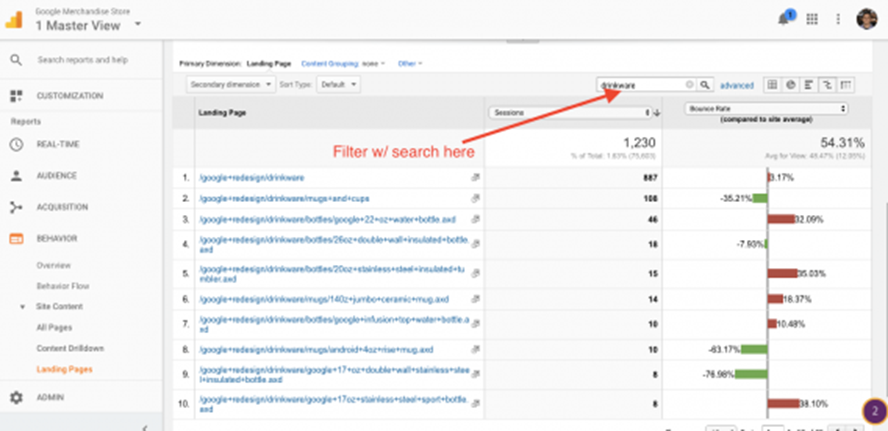
How does Page Speed Affect Bounce Rate?
This infographic below shows how page speed will affect the bounce rate. It is the average page load times that are experienced by visitors in different seconds.
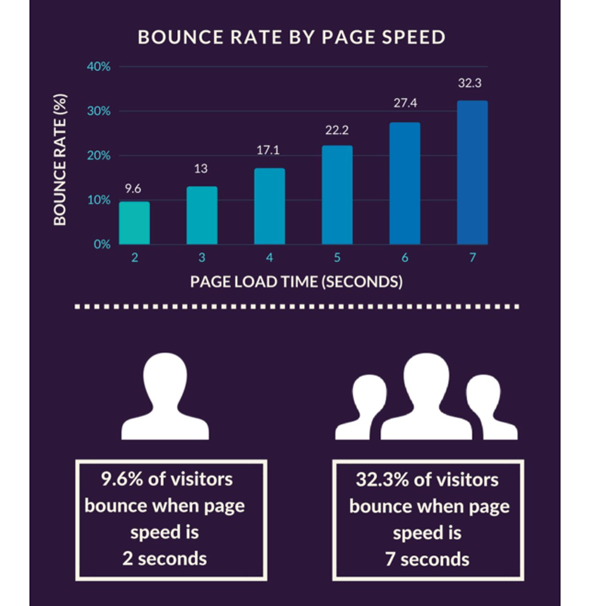
When the page speed increases, the bounce rate increases, meaning that more people only visit a single page, and the slower the first page they visit is.
Tips To Reduce Bounce Rate
Here are some effective tips to reduce your bounce rate:
Write Relevant Audience
It is essential to ensure that your content is relevant to your target audience. If your content is irrelevant, people will likely click away from your page, resulting in a high bounce rate. Make sure to research your target audience and write content they will find interesting and valuable.
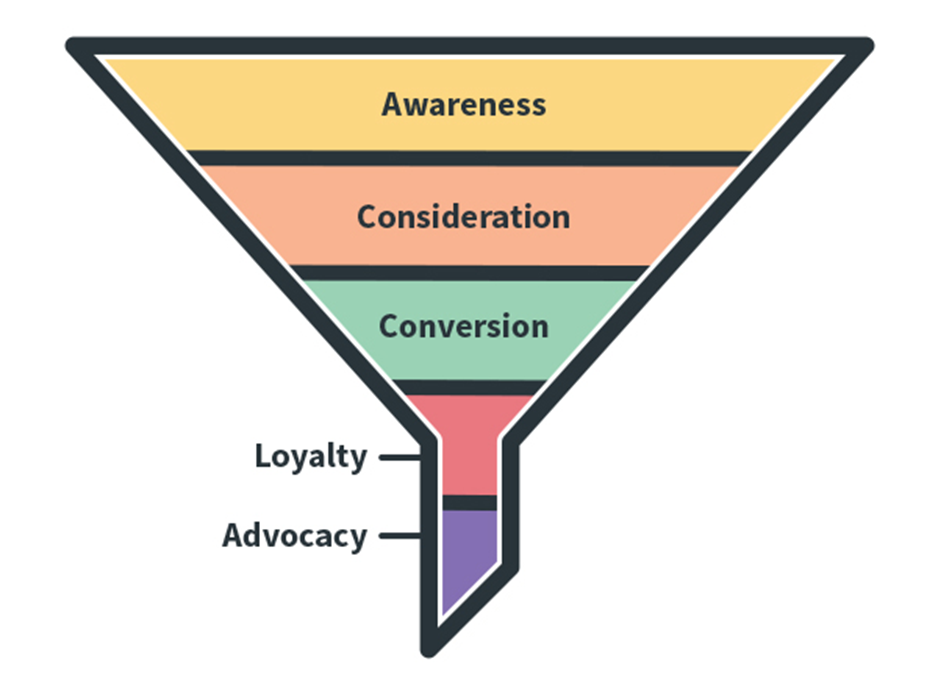
Make Your Content Easy To Read
Your content should be easy to read, or people will likely click away. Break up your text into short paragraphs and use headlines and subheadings to make scanning easy. Use bullet points and lists when possible. And, of course, proofread your content for errors before publishing it.
Concentrate On A State-Of-The-Art Design
Your website’s design is essential for several reasons. First, it should be visually appealing to help keep people’s attention. Second, it should be easy to navigate so people can find what they’re looking for quickly and easily. And third, your design should be responsive to look good on all devices. A well-designed website will help reduce your bounce rate.
Use Images And Videos
Images and videos can help make your content more engaging and visually appealing. People are likelier to click on and watch a video than read a long text block. However, use relevant, high-quality images and videos that add value to your content. Don’t just add them for the sake of it.
Include A Call To Action
Your content should include a call to action (CTA) telling people what you want them to do next. With a CTA, people may know what to do after reading your content. They will likely click away from your page if they need help figuring out what to do. So, include a CTA in every piece of content you publish.
Do Regular Content Audits And Update Old Content
If you have old content on your website, it’s essential to update it regularly. Outdated content can give people a better impression of your business and turn them off.

